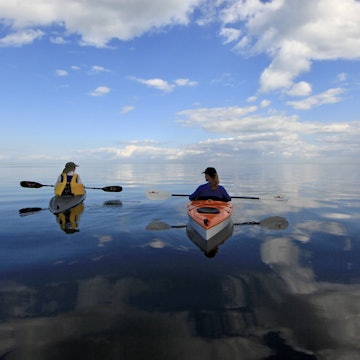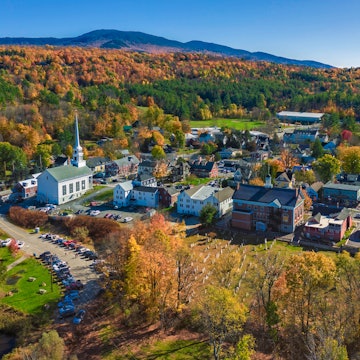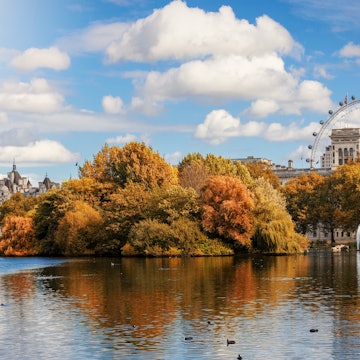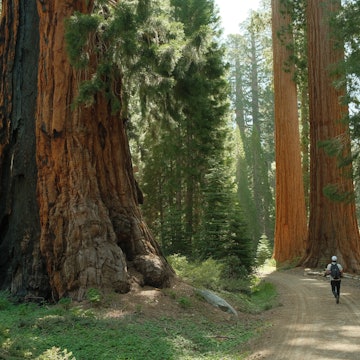

The Rio Grande flows through Santa Elena Canyon in Big Bend National Park, Texas. yggdrasill/Shutterstock
The jewel of West Texas, Big Bend National Park is filled with rugged, unforgiving landscapes that provide ample opportunities for hiking, camping, backcountry driving, stargazing and water sports. Mountain peaks covered in oak and juniper trees soar above a vast unforgiving desert. Steep canyons carved out of limestone by the Rio Grande River rise majestically into clear skies that turn into a pitch-black blanket of stars at night. Ocotillo plants jut out of the ground like imposing, wiry sculptures.
Big Bend is named after the sharp bend that the Rio Grande makes at the park’s southern edge. The river shifts from a southeastern to a northeastern flow here, carving out majestic canyons as it changes course.
An entire mountain range – the Chisos – sits inside the park. This is a place where dinosaurs once roamed and where paleontologists continue to unearth dinosaur remains. Summer days are scorching, and services are limited.
This is the wildest part of Texas, and it’s a place you’re unlikely to forget. If you’re planning your first (or your tenth) trip to this national treasure, here’s all you need to know.

When should I go to Big Bend National Park?
The best time to visit the park is between October and April, when the desert heat is at its most bearable. Note that in the winter months, temperatures can swing from the mid-60s°F/15–20°C during the day to close to freezing at night. Pack layers.
The busiest time of year at the park falls between February and April. March and April – when desert plants reveal spring blooms, regardless of rainfall levels – are especially appealing.
If possible, avoid the park in summer; scorching, unrelenting heat is the norm from May through September.
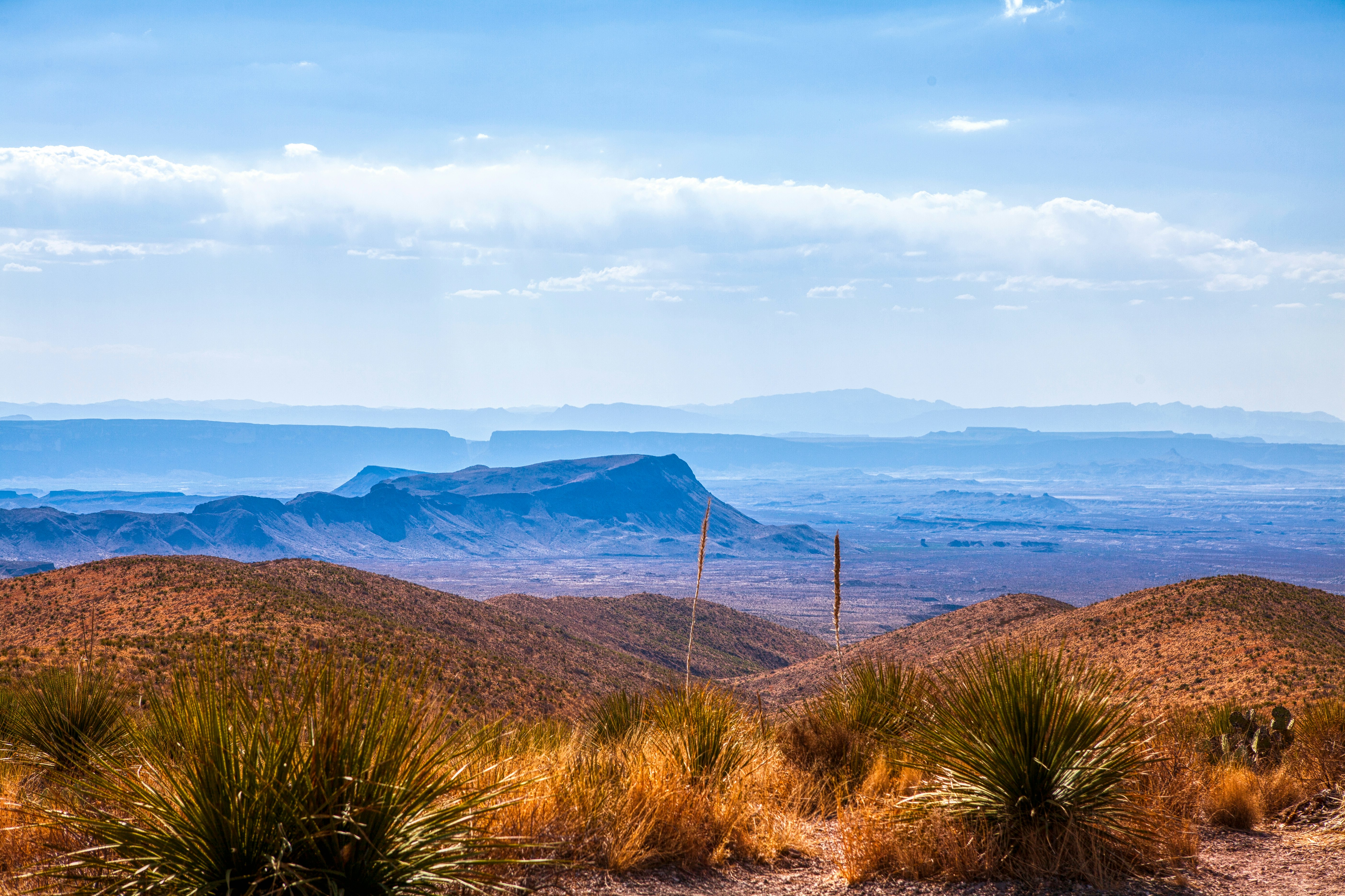
How much time should I spend in Big Bend National Park?
While just one day won’t let you see every scenic overlook or hike every trail (Big Bend is 800,000 acres – larger than the state of Rhode Island), you can take in several highlights on an ambitious, 100-mile (161km), one-day drive.
Enter the park through the northern Persimmon Gap entrance and onto Main Park Rd. Stop first at the Fossil Discovery Exhibit to wander through 130 million years of paleontological history and see examples of fossils that have been unearthed in this area. From there, head south into the basin of the Chisos Mountains, a range contained entirely within the national park. Stop to tackle one of Big Bend’s quickest treks, the 0.3-mile (500m) gentle walk to Window View. Stretch your legs, grab a snack, use the Chisos Basin Visitor Center services, and get back in the car to head to Sotol Vista Overlook, one of the prettiest in the park, with views of ocotillos dotting the desert.
Next, make your way to Ross Maxwell Scenic Drive, a 30-mile (48km) stretch of road that skirts the western slopes of the Chisos Mountains toward staggering vistas; eventually, you’ll be running parallel with the Rio Grande. This route provides access to several trailheads and scenic overlooks, including the Mule Ears Viewpoint. Next, stop in Castolon, a former military site, refugee community and cotton farm. A fire in 2019 ripped through key historic buildings here, but you can still see hints of the army compound and cotton farm that stood here.
Finish your day on the road in Big Bend with a stop at Santa Elena Canyon, one of the park’s most recognizable sights. Even from afar, the canyon’s majesty is palpable.
Two or more days in Big Bend offers the chance to do some of the park’s best hikes, including the Lost Mine and Santa Elena Canyon trails. If outdoor pursuits are your passion, you could spend many more days exploring the mammoth park by foot, car or kayak.
Staying overnight within the park (see below) will let you take in some of North America’s clearest nighttime skies – and the magnificent stars within them.
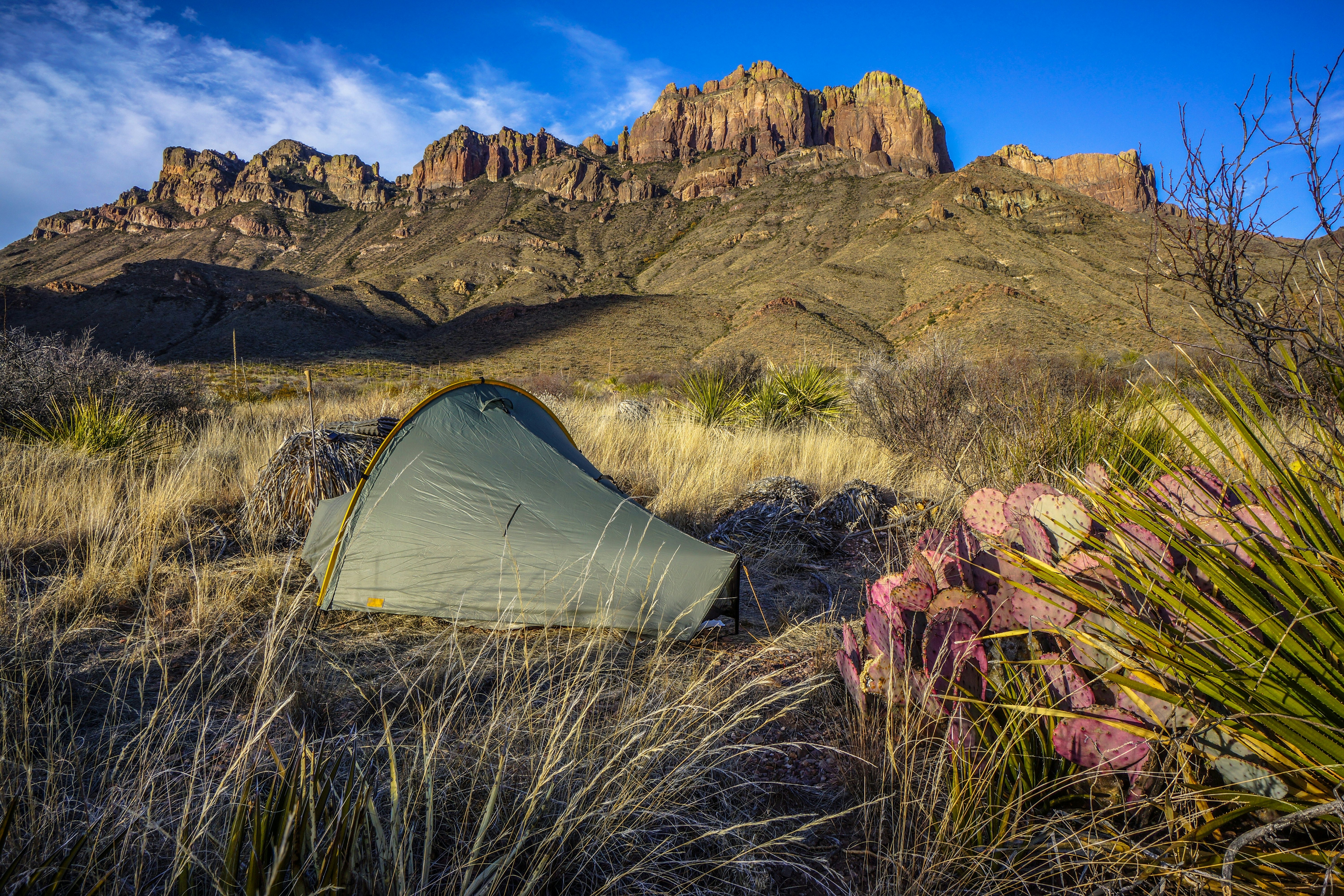
Where can I stay in Big Bend National Park?
Three campgrounds lie within the park’s boundaries. Chisos Basin is nestled in a wooded area with dazzling views of Casa Grande and Emory Peak in the Chisos. Rio Grande Village sits near the river in a grove of acacia and cottonwood trees, with areas for tent camping and an RV park. In the western corner of the park, Cottonwood is a small and lovely campground (it’s not open during the summer months).
Advance reservations are required for all park campgrounds. Backcountry camping is permitted with the appropriate permit.
Other than camping, the only accommodation within the park is Chisos Mountains Lounge, at the base of the mountain range – which is currently closed until 2027. Run by the same operators, Big Bend Station, just outside the Maverick entrance to the park, has a range of rustic rooms with differing levels of amenities.
Outside the park, you’ll find hotels, resorts, campsites and other types of lodging in Marathon, Terlingua, Lajitas, Alpine and Marfa. The most creative accommodation options are in Terlingua (we love the luxury yurts at Terlingua Escondido), and there are a few classic hotel chains in Alpine.
Is it easy to get around in Big Bend National Park?
Big Bend National Park is one of the most isolated national parks in the US, with the nearest major city, El Paso, almost 300 miles (480km) away. Since no public transportation goes to or within the park, most visitors experience its grandeur in their own cars.
The park has two entrances: Persimmon Gap, on its remote north side, and Maverick to the west, which is close to the nearby towns of Terlingua and Study Butte. Two gas stations lie within the park, at Panther Junction and Rio Grande Village. Note: there are no EV charging stations inside the park as yet.
Private shuttle services are available through the Far Flung Outdoor Center, Desert Sports and Big Bend River Tours; Desert Sports, in nearby Terlingua, also rents mountain bikes.
If you don’t want to drive yourself, a handful of companies (including the ones noted above) offer guided tours that include spots that may be harder to access in traditional vehicles. One of the most unique is Rio Aviation, which offers visitors a chance to see the park from the air.
Top things to in Big Bend National Park
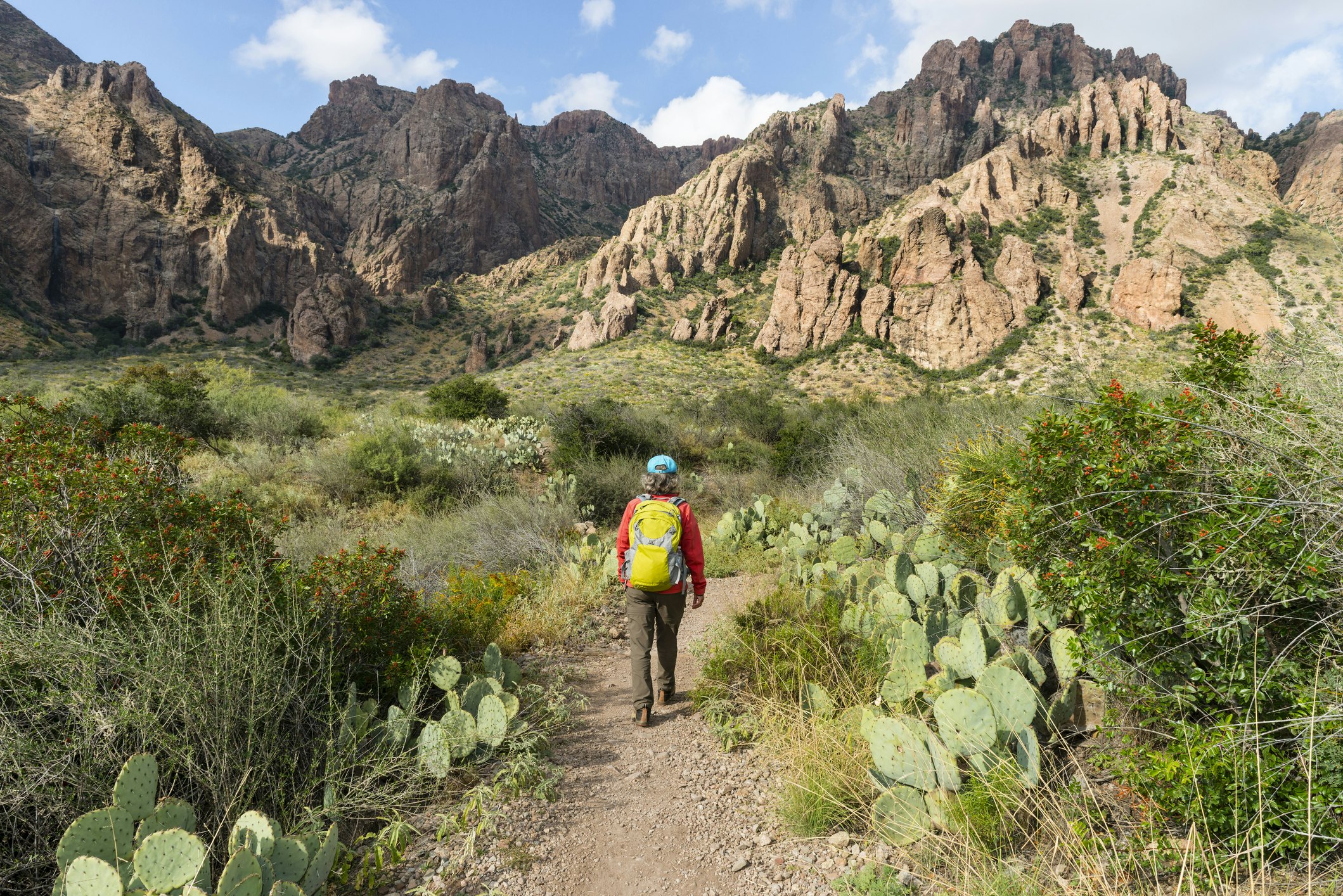
Set out on a hike to see the park’s grandeur
Big Bend National Park boasts more than 150 miles (241km) of hiking trails, giving visitors lots of options for getting to know the park on foot.
For a moderate hike that provides an excellent introduction to the park’s varied landscapes, try the 4.8-mile (7.7km) round-trip Lost Mine Trail. The trail’s gently sloping switchbacks climb over 1000ft (333m) through a cool, shaded forest of juniper, oak and pine trees. You’ll take in views of Juniper Canyon and Casa Grande Peak as you approach the main viewpoint, from where cliffs, craggy peaks and lush canyons are everywhere you look.
For panoramic desert vistas, try the 5.6-mile (9km) round-trip Window Trail; see a historic corral and spring on the 3.8-mile (6.1km) round-trip Mule Ears Trail; or invest your time in the 1.6-mile (2.6km) round-trip Santa Elena Canyon Trail, one of the most beautiful short trails in the park. But don’t let the short distance fool you: this trail requires hikers to cross the bed of Terlingua Creek and climb a steep bank.
If you’re an experienced hiker looking for more of a challenge consider the strenuous 12-to-14.5-mile (19.3-to-23.3km) round-trip South Rim Trail. On a clear day, you can see hundreds of miles into Mexico from these cliffs. Two of the toughest multiday hikes in the park are the Marufo Vega Trail (14 miles/22.5km round trip) and the 30-mile (48.3km) Outer Mountain Loop.
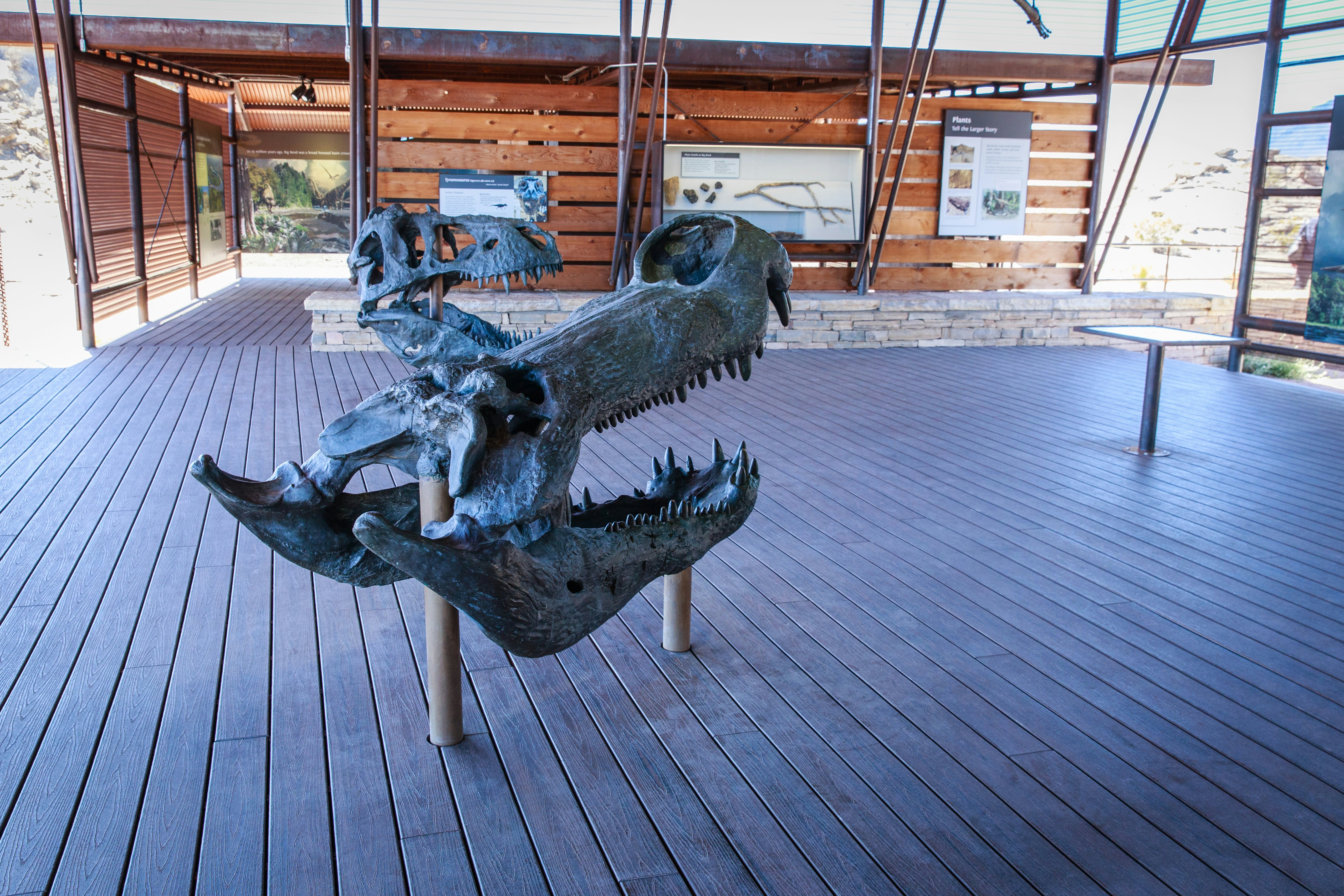
Imagine the dinosaurs that once roamed this terrain
While it’s hard to imagine when you’re standing under the sun in a bone-dry desert, Big Bend was a coastal swamp millions of years ago, one that teemed with life. Indeed, the remains of more than 90 dinosaur species – including the world’s largest flying creature, a pterosaur with a wingspan of nearly 40ft (12m) – have been unearthed here. Researchers also have found giant skulls of the horned dinosaur Bravoceratops.
Along with fossilized plants, amphibians and early mammals, these discoveries have helped paleontologists paint one of the most complete pictures of a prehistoric ecosystem anywhere in the world. Visit the park’s Fossil Discovery Exhibit to see examples of the 1200 known fossil species that have been found here, and to visualize what the vast expanse surrounding it might have looked like when these giants roamed here.
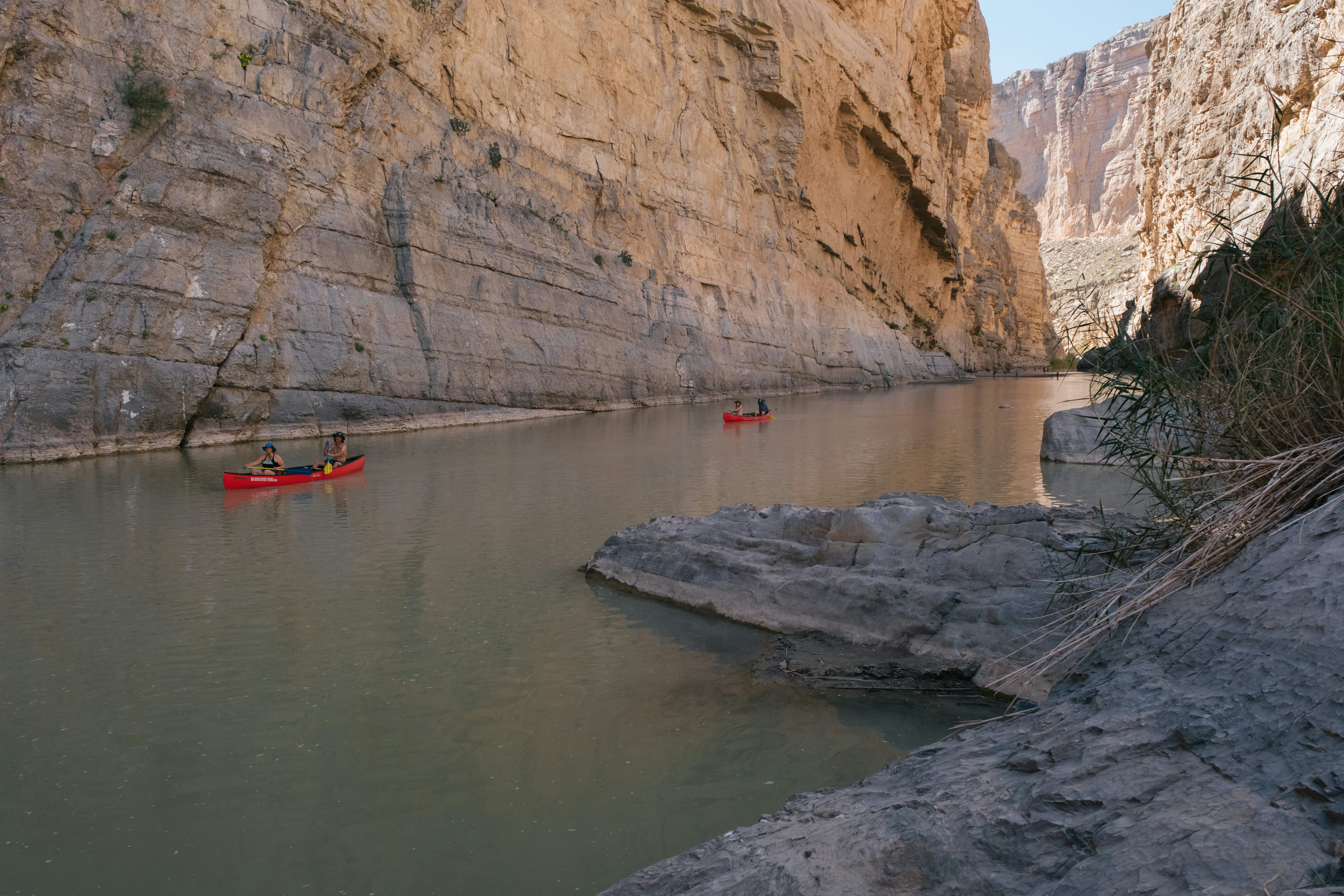
Take to the Rio Grande for views you can’t get anywhere else
Set out with kayak, canoe or raft on the Rio Grande in Big Bend National Park and you’ll get a deeper understanding of the path this powerful river carved through the limestone. As you float down the river, you’ll feel enveloped by the canyons – the walls of which can soar up to 1500ft (457m) high. Listen out for beavers sliding down riverbanks into the water, and look for turtles sunning themselves on logs and rocks just above the waterline.
River trips can range from a few hours to a few days, and tend to center either around the Santa Elena Canyon or an area that includes the Mariscal, Hot Springs and Boquillas Canyons. For day trips, expect to head out early in the morning and return early in the afternoon, before temperatures get sweltering. Reputable operators include Angell Expeditions, Big Bend River Tours, Far Flung Outdoor Center and Wild Adventure Outfitters
Whether you’re joining a tour or bringing your own equipment, you need a “backcountry use permit” to take the river; get one in person at the Chisos Basin and Panther Junction Visitor Centers up to seven days in advance. Life vests are required on the water.
Soak in a hot spring
If you’re one of those people who prefers soaking naturally heated water while taking in endless nature views, the Big Bend Hot Springs, also known as Boquillas Hot Springs, is for you. You’ll have to hike a quarter-mile each way to access the secluded pool, which overlooks the Rio Grande. The 105°F (40.5°C) water and serenity at this spot are worth the effort, especially if you’ve been hiking. Bathing suits are required, and changing facilities are not available.

Gaze up stars shining big and bright
Big Bend National Park is home to some of the darkest skies in the world, making for truly dreamy stargazing. (The stars at night shine really big and bright in this part of Texas.) Indeed, the skies here are so dark that Big Bend has been certified as an International Dark Sky Park by the Dark Sky Association.
Bring your binoculars, or sit around a campfire with a park ranger for a guided stargazing session. There’s nothing like seeing the Milky Way with your own eyes – and this is one of the best places in North America to catch a glimpse of it.
For the best views of the starry skies here, give your eyes a chance to adjust to the dark. It typically takes about a half-hour for eyes to adjust to total darkness; once they do, you’ll be able to see many more stars than you ever thought possible. Using a phone can disrupt your night vision, so keep it in your pocket and opt for a red LED light if needed.
How much money do I need for Big Bend National Park?
Entrance pass: $30 per vehicle
Campground reservation: $16 per night
Room at Big Bend Station: from $153 per night
Backcountry use permit: $10 per day
Half-day Rio Grande kayak trip with Far Flung Outdoor Center: from $90
Aerial tour with Rio Aviation: from $175 per person per hour
Chicken-fried Texas antelope at Starlight Theatre in Terlingua: $25.95
Safety in Big Bend National Park
Big Bend National Park is a place with limited cellular coverage (download any maps you’ll need before you get into the park), few services and a vast, unforgiving landscape. A little preparation goes a long way here.
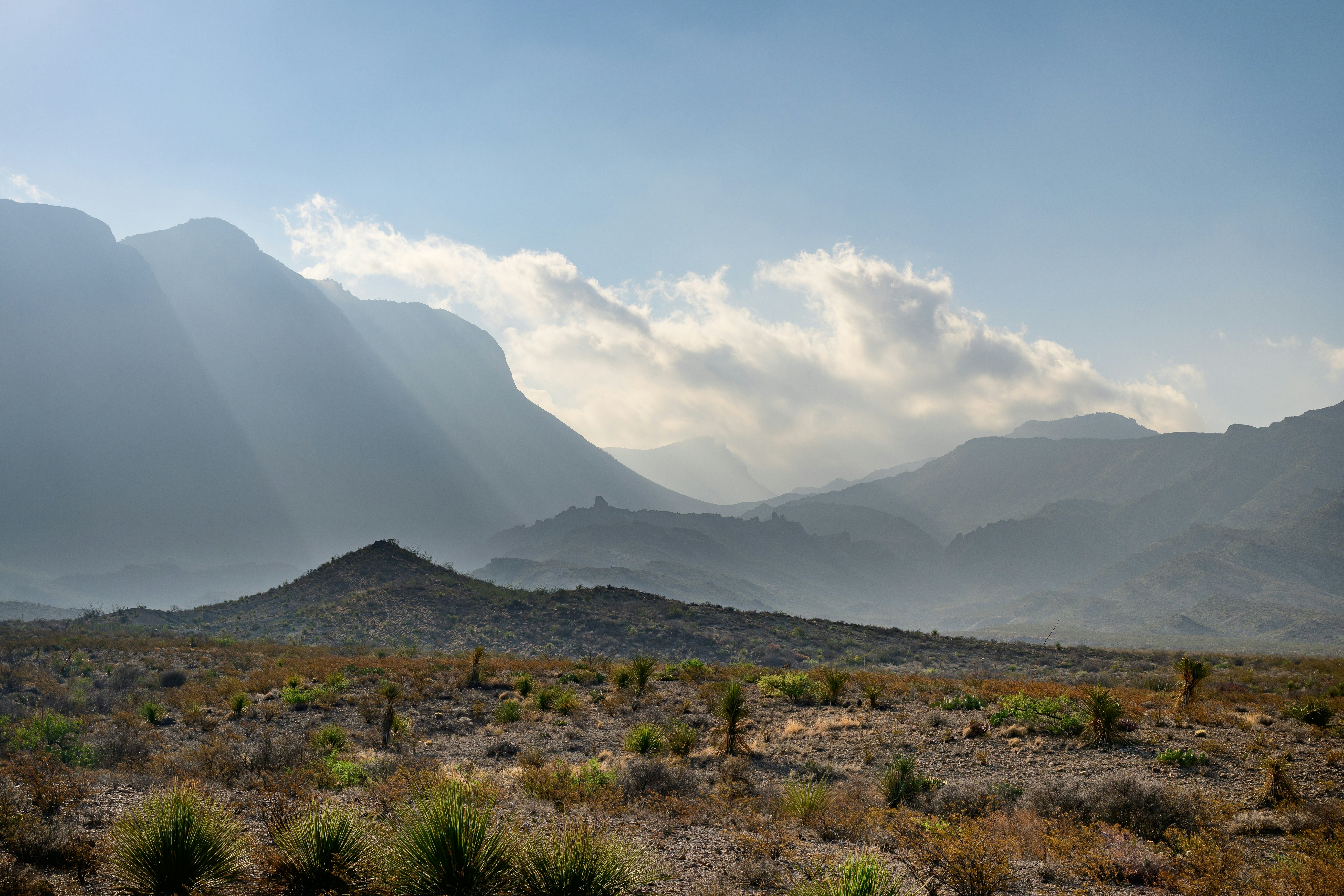
Take care in the heat of Big Bend National Park
One of the biggest risks to visitors is extreme heat, especially during the summer. Park rangers recommend carrying extra food and water into the park, especially if you’re planning on hiking, backcountry driving or camping. Their guidelines include bringing at least one gallon of emergency water per person per day. Plan on packing extra sunscreen, protective clothing and lip balm, too.
Tips for hiking safely in Big Bend National Park
When hiking, you’ll want to wear a hat, long pants, a long-sleeved shirt and ample sunscreen to prevent sunburn. Plan your hikes for early in the morning before temperatures peak; some people even hike with an umbrella for shade.
It’s also key to select the right trails for your level of hiking ability. Trails range from well maintained paths within sight of service centers to primitive and barely visible tracks.
If you are planning to hike, tell people where you’re going and when to expect you back. Bring a printed map and compass and learn how to use them before your trip. Also pack a flashlight, first-aid kit, and a mirror and whistle to signal for help if you get hurt or lost. Always stay away from snakes, some of which are venomous.
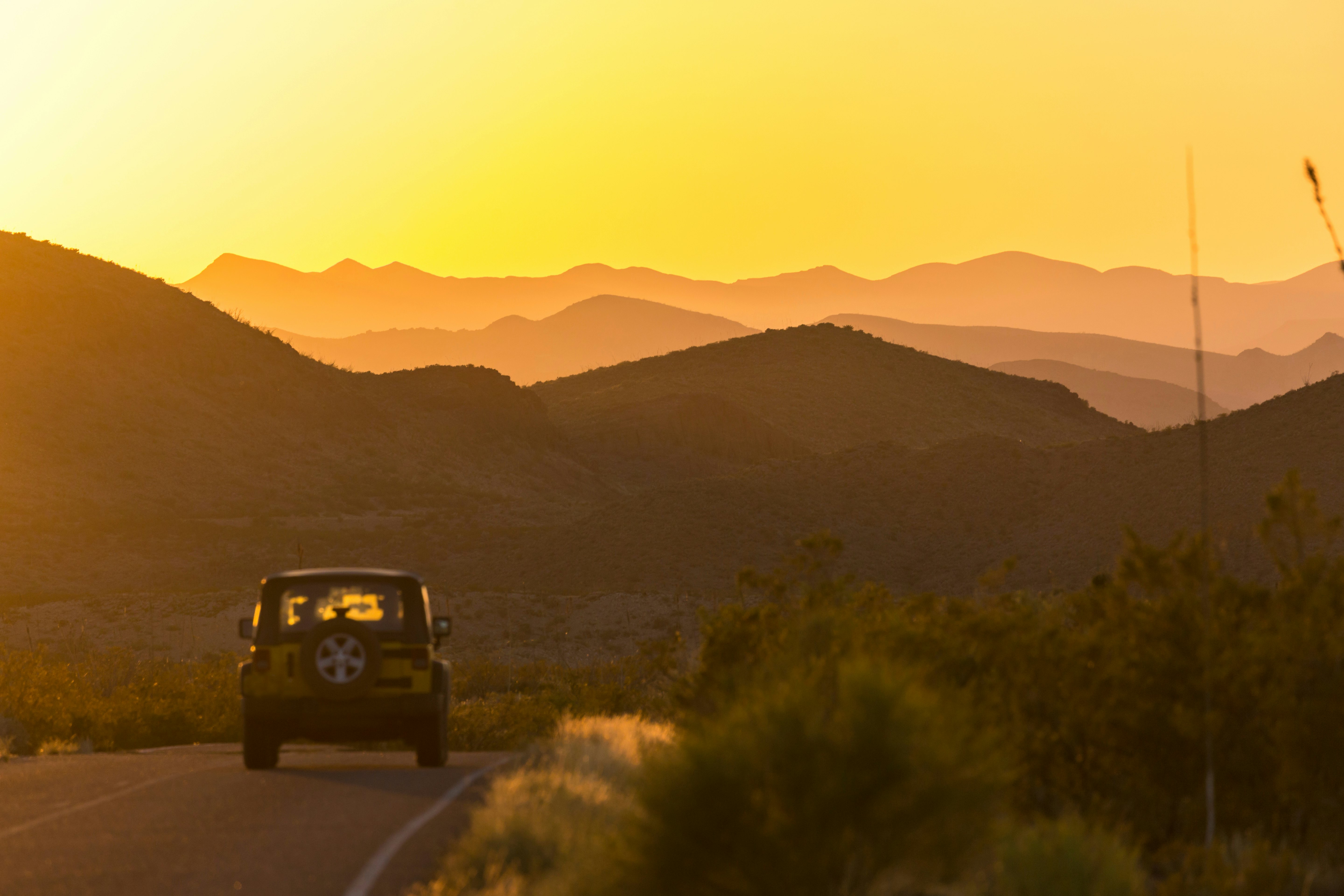
Driving safety tips in Big Bend National Park
Vehicle accidents are one of the most common causes of injury to park visitors. Follow the park’s 45mph speed limit and keep your eyes peeled for javelina, deer, rabbits and other wildlife that could dart in front of you. Never stop in the middle of the road for a photo.
If you plan on backcountry driving, make sure to have a spare tire and a jack as well as sleeping bags. If your vehicle breaks down on a backcountry road, try to call for help and wait with your vehicle. Vehicles can be easier to spot than people in the desert.
Never swim in Big Bend National Park
Skip swimming in the Rio Grande, no matter how tempting it may look. Strong undercurrents, deep holes and shallow areas filled with sharp rocks and tree limbs make for serious obstacles.
Beware of black bears in Big Bend National Park
After being absent from the park for decades, black bears began returning to Big Bend in the late 1980s. If you come upon one in the park, give it space and back away slowly. If you’re with a group, gather together to try to make yourself look as large as possible. Never feed any bears – instead you should shout, wave or throw stones to scare it off if one attempts to approach you. Report all sightings to park rangers, as well.
This article was adapted from the 7th edition of Lonely Planet’s Texas guide, published in August 2025.








